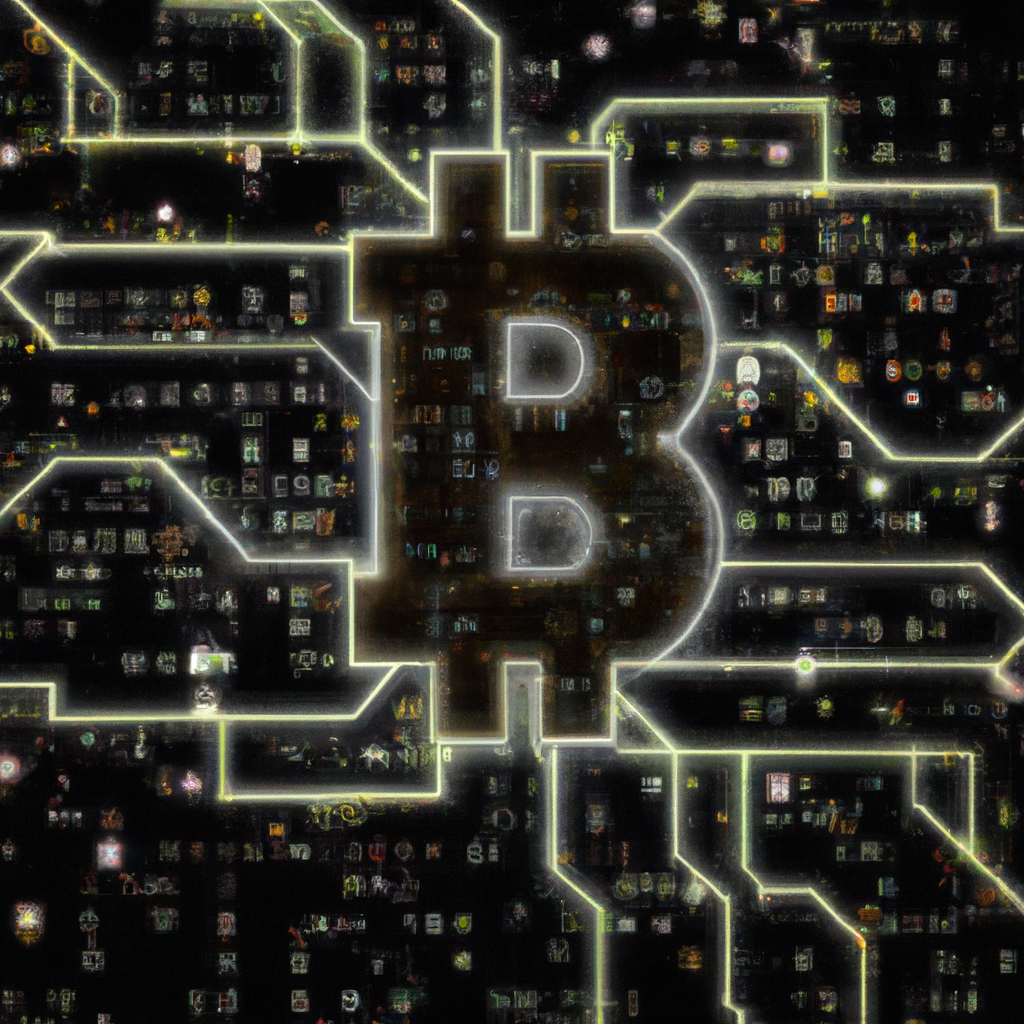Imagine a future where browsing the internet is no longer dominated by large tech companies and controlled by centralized servers. A new wave of innovation is on the horizon, powered by blockchain technology, that has the potential to completely change the way we browse the web. This article explores the concept of a decentralized internet and how blockchain technology could revolutionize the online experience, providing users with more privacy, security, and control over their data. Get ready to dive into a world where the internet is truly yours.
1. Understanding the Decentralized Internet
1.1 What is the Decentralized Internet?
The decentralized internet refers to a digital ecosystem where online activities are not controlled or monitored by a centralized authority. Instead, it leverages blockchain technology, a distributed ledger system, to provide a peer-to-peer network that allows users to interact directly with each other without the need for intermediaries. This decentralized approach seeks to challenge the traditional infrastructure dominated by a few large corporations, giving individuals more control over their data and online experiences.
1.2 How Does Blockchain Work in the Context of the Decentralized Internet?
Blockchain, the underlying technology behind cryptocurrencies like Bitcoin, plays a vital role in the decentralized internet. It operates as a decentralized ledger that records all transactions and interactions across the network. This distributed ledger ensures transparency, security, and immutability by utilizing a consensus mechanism where multiple participants validate and agree upon the accuracy of transactions.
By using blockchain technology, the decentralized internet can eliminate the need for trusted intermediaries like banks or social media platforms. It enables users to directly interact, share data, and conduct transactions in a secure and transparent manner, without relying on a single centralized entity.
2. Advantages of the Decentralized Internet
2.1 Increased Security and Privacy
One of the key advantages of the decentralized internet is enhanced security and privacy. Centralized platforms are often vulnerable to hacking and data breaches due to a single point of failure. In contrast, the decentralized internet distributes data and transactions across multiple nodes, making it highly resistant to cyber attacks and ensuring no single point of failure exists. Additionally, blockchain technology employs cryptographic techniques that protect user data by providing strong encryption, ensuring the privacy of personal information.
2.2 Removal of Centralized Control
The decentralized internet eliminates the concentration of power and control in the hands of a few centralized authorities. This empowers individuals by giving them full ownership and control over their data. Users can decide how their data is shared, who has access to it, and how it is used. This shift from centralized control to individual empowerment is a significant advantage that promotes self-sovereignty in the digital realm.
2.3 Data Ownership and Monetization
In the traditional internet, data generated by users often becomes the property of centralized platforms, which exploit this data for targeted advertising or other purposes. In the decentralized internet, users retain ownership of their data and have the freedom to choose whether to monetize it or keep it private. This enables users to regain control over their data and benefit directly from its value, rather than relying on third-party platforms.
2.4 Censorship Resistance
Censorship is a significant concern in the traditional internet, with governments and authorities having the power to restrict access to certain websites or control the flow of information. The decentralized internet, powered by blockchain technology, is inherently resistant to censorship due to its decentralized nature. Since data is distributed across multiple nodes, it becomes nearly impossible for any single entity to censor or restrict access to information. This promotes freedom of speech and empowers individuals to express themselves without fear of suppression.
2.5 Enhanced Network Stability and Resilience
The decentralized internet is designed to be highly resilient and resistant to network failures. In a decentralized network, there is no single point of failure that can bring down the entire system. If one node or server goes offline, the network can continue to operate smoothly, as other nodes can take over the required functionality. This resilience ensures that the decentralized internet can withstand various types of disruptions, making it more reliable and robust than centralized alternatives.

3. Potential Challenges and Limitations
3.1 Scalability
Scalability remains a considerable challenge for the decentralized internet. Blockchain technology, while secure and transparent, currently suffers from limited scalability. As the number of users and transactions increase, the blockchain network may experience slower transaction speeds and higher costs. However, ongoing research and development efforts are dedicated to addressing this challenge through protocols such as sharding and layer 2 solutions.
3.2 Energy Consumption
Another limitation of the decentralized internet is the significant energy consumption associated with blockchain technology. The consensus mechanisms, such as proof-of-work, used in many blockchain networks require substantial computational power, resulting in high energy consumption. However, efforts are being made to develop and adopt more energy-efficient consensus mechanisms, such as proof-of-stake, to mitigate these environmental concerns.
3.3 User Experience and Familiarity
The decentralized internet, being a relatively new concept, may present challenges in terms of user experience and familiarity. Many users are accustomed to the convenience and simplicity of centralized platforms, and transitioning to decentralized alternatives may require a learning curve. User-friendly interfaces and intuitive applications will play a crucial role in ensuring a seamless and familiar experience for users, enabling wider adoption of the decentralized internet.
3.4 Governance and Regulatory Issues
Governance and regulatory challenges also exist in the decentralized internet space. As decentralized platforms operate outside the control of centralized authorities, it raises questions about accountability, legal frameworks, and jurisdiction. The evolving regulatory landscape will need to adapt to accommodate the decentralized internet while ensuring consumer protection, privacy, and security.
4. Use Cases for Blockchain in the Decentralized Internet
4.1 Domain Name Systems (DNS)
Domain Name Systems (DNS) is a critical component of the internet infrastructure that translates domain names into IP addresses. Decentralized DNS systems leverage blockchain technology to eliminate reliance on centralized DNS servers, ensuring censorship-resistant and tamper-proof domain name resolution. Blockchain-based DNS systems can enhance security and prevent unauthorized alteration, effectively decentralizing control over domain names.
4.2 Content Delivery Networks (CDNs)
Content Delivery Networks (CDNs) are responsible for delivering web content efficiently, reducing latency, and improving user experience. In the decentralized internet, blockchain can be utilized to create decentralized CDNs, where content is distributed across a network of nodes, rather than relying on centralized servers. This ensures faster content delivery and enhanced resilience, as the network can adapt to fluctuations in demand or disruptions.
4.3 Distributed Storage
Decentralized storage is a major use case for blockchain in the decentralized internet. Blockchain-based storage solutions leverage the excess capacity of network participants’ devices to create a distributed storage network. This approach eliminates the need for centralized storage providers, reducing costs and improving data availability and redundancy.
4.4 Micropayments and Content Monetization
Blockchain technology enables the seamless execution of micropayments on the decentralized internet. Content creators can be directly compensated for their work, as users can pay for access or usage on a per-click or per-second basis. This opens up new possibilities for content monetization models, ensuring fair compensation for creators and eliminating the need for intermediaries.
4.5 Identity and Authentication
Identity and authentication are critical components of online interactions. Blockchain technology can enable decentralized identity solutions, where users have control over their digital identities and can authenticate themselves without relying on centralized authorities. This enhances privacy, security, and eliminates the risks associated with centralized identity systems.

5. Projects and Initiatives in the Decentralized Internet Space
5.1 InterPlanetary File System (IPFS)
InterPlanetary File System (IPFS) is a decentralized protocol that allows distributed file storage and retrieval. IPFS aims to create a more robust and decentralized web by replacing the traditional location-based addressing with content addressing, ensuring content availability even if the original source is offline. IPFS facilitates censorship-resistant file storage and sharing, addressing the limitations of centralized file hosting services.
5.2 Blockstack
Blockstack is a decentralized computing network that provides users with the ability to build decentralized applications (dApps) and control their own data. The platform enables users to create their own digital identities and communicate securely without relying on centralized platforms. Blockstack empowers developers to build on a secure and privacy-focused infrastructure while ensuring users have control over their data.
5.3 MaidSafe
MaidSafe is a decentralized network protocol that enables secure and efficient data storage and communication. The network utilizes a unique consensus mechanism called “proof of resource” to ensure participants contribute storage space, computation power, and bandwidth. MaidSafe aims to provide a secure and censorship-resistant platform that fosters privacy and data ownership.
5.4 Ethereum Name Service (ENS)
The Ethereum Name Service (ENS) is a decentralized domain name system built on the Ethereum blockchain. ENS enables users to register and manage domain names in a decentralized manner, eliminating the reliance on centralized domain registrars. This promotes censorship resistance and allows users to have full control over their domain names and associated content.
5.5 Elastos
Elastos is a decentralized internet platform that aims to create a new virtual economy where digital assets and applications can be owned, accessed, and traded securely. Elastos utilizes blockchain technology and a peer-to-peer network to enhance security, privacy, and promote user sovereignty. The platform aims to enable a new generation of decentralized applications that are free from data breaches and censorship.
6. Potential Impacts on Traditional Internet Infrastructure
6.1 Changes to Internet Service Providers (ISPs)
The rise of the decentralized internet could challenge the role of traditional Internet Service Providers (ISPs). With peer-to-peer networks, users can share and access content directly without relying on centralized servers or infrastructure. This could lead to a shift in the ISP landscape, with traditional providers facing increased competition from decentralized alternatives.
6.2 Disruption to Traditional Web Hosting
The decentralized internet has the potential to disrupt traditional web hosting models. Distributed storage systems and content delivery networks can create a more resilient and efficient infrastructure compared to centralized hosting providers. This shift could reduce costs, increase data availability, and provide a more reliable web experience for users.
6.3 Reimagining Content Distribution Models
The decentralized internet enables new content distribution models that challenge the dominance of centralized platforms. With micropayments and peer-to-peer sharing, content creators can directly monetize their work without depending on advertising revenue or third-party platforms. This empowers creators and encourages a more diverse and decentralized content ecosystem.

7. Future Outlook for the Decentralized Internet
7.1 Adoption Challenges and Market Dynamics
While the decentralized internet holds tremendous potential, there are several adoption challenges and market dynamics that need to be addressed. User education and awareness of the benefits and functionalities of the decentralized internet are crucial for mainstream adoption. Moreover, regulatory frameworks will need to evolve to accommodate the decentralized nature of these platforms while addressing concerns related to privacy, security, and compliance.
7.2 Integration with Web 3.0
Web 3.0 refers to the evolution of the internet, where decentralized technologies, such as blockchain, enable the creation of more transparent, secure, and user-centric experiences. The decentralized internet plays a vital role in the development of Web 3.0, offering solutions that empower individuals, enhance privacy, and foster innovation. As Web 3.0 continues to evolve, the decentralized internet will likely become an integral part of the internet ecosystem.
7.3 Opportunities for Innovation and Entrepreneurship
The decentralized internet presents significant opportunities for innovation and entrepreneurship. As the technology matures, developers and entrepreneurs can create new applications, services, and business models. Startups can leverage blockchain and decentralized technologies to disrupt traditional industries, while established companies can explore partnerships and collaborations to incorporate the benefits of the decentralized internet into their existing infrastructure.
In conclusion, the decentralized internet, supported by blockchain technology, promises a paradigm shift in the way we browse and interact online. With increased security and privacy, removal of centralized control, and the potential for data ownership and monetization, the decentralized internet aims to empower individuals and foster a more inclusive and resilient digital ecosystem. While challenges related to scalability, energy consumption, user experience, and governance need to be addressed, the potential use cases, projects, and initiatives in the decentralized internet space indicate a promising future where individuals have greater control over their digital lives and the internet becomes more decentralized and democratic.













